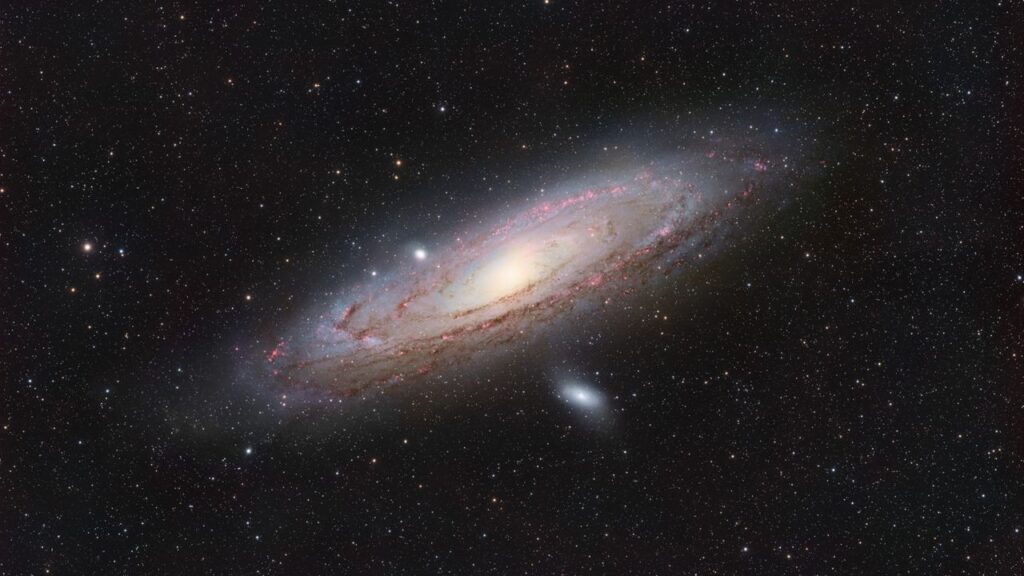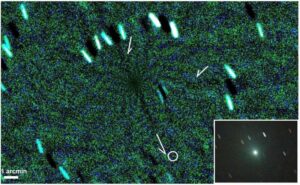
Astrophotographer Ronald Brecher has unveiled an extraordinary image of the Andromeda Galaxy, located approximately 2.5 million light-years from Earth. This captivating portrait showcases the galaxy’s sweeping spiral arms and the intense light generated by ongoing star formation. The photograph highlights intricate details, including dense dust lanes that coil around Andromeda’s luminous galactic center, believed to harbor a supermassive black hole estimated to be 140 million times the mass of our sun.
The image also captures the nearby satellite galaxy M32, visible as a bright sphere along the upper edge of Andromeda’s disk. Additionally, the elliptical galaxy Messier 110 can be seen below, containing approximately 10 billion stars of its own. Brecher took the photograph over a period of 38 hours from August 17 to September 2, 2023, using a Sky-Watcher Esprit 70 EDX refractor paired with a QHY367C Pro camera from his home in Guelph, Canada.
Astrophotography’s Timeless Connection
In a post on his website, Brecher reflected on the profound connection between the ancient light of Andromeda and human history. “Whenever I look at this galaxy — which is often with my naked eye — I think of the light reaching my eye having begun its journey before humans evolved on Earth,” he noted, calling the experience “pretty cool.” This sentiment captures the wonder that astrophotography evokes, allowing viewers to appreciate the cosmos in new and exciting ways.
For those interested in locating the Andromeda Galaxy, it can be found less than 10 degrees to the upper left of Mirach, the brightest star in the Andromeda constellation, shortly after sunset in late September. To gauge this distance, a clenched fist held at arm’s length covers approximately 10 degrees of sky.
Future of Andromeda and the Milky Way
Until recently, astronomers largely believed that the Andromeda Galaxy would collide and merge with our Milky Way in roughly 4 billion years. However, recent research conducted by the University of Helsinki has cast doubt on this certainty. Researcher Til Sawala stated, “the probability went from near-certainty to a coin flip,” suggesting that the future of these two galaxies may not be as intertwined as once thought.
This shift in understanding reflects the evolving nature of astronomical research, emphasizing the need for continuous exploration and inquiry. As new technologies and methods are developed, our comprehension of the universe continuously expands.
For those passionate about astrophotography, sharing images with a wider audience can be rewarding. Interested photographers are encouraged to submit their work, along with their name and location, to [email protected].
Brecher’s stunning capture of the Andromeda Galaxy not only showcases the beauty of our cosmic neighbor but also invites awe and contemplation about the universe’s vastness and the passage of time.






